Your cart is currently empty!
Tag: Troubleshooting
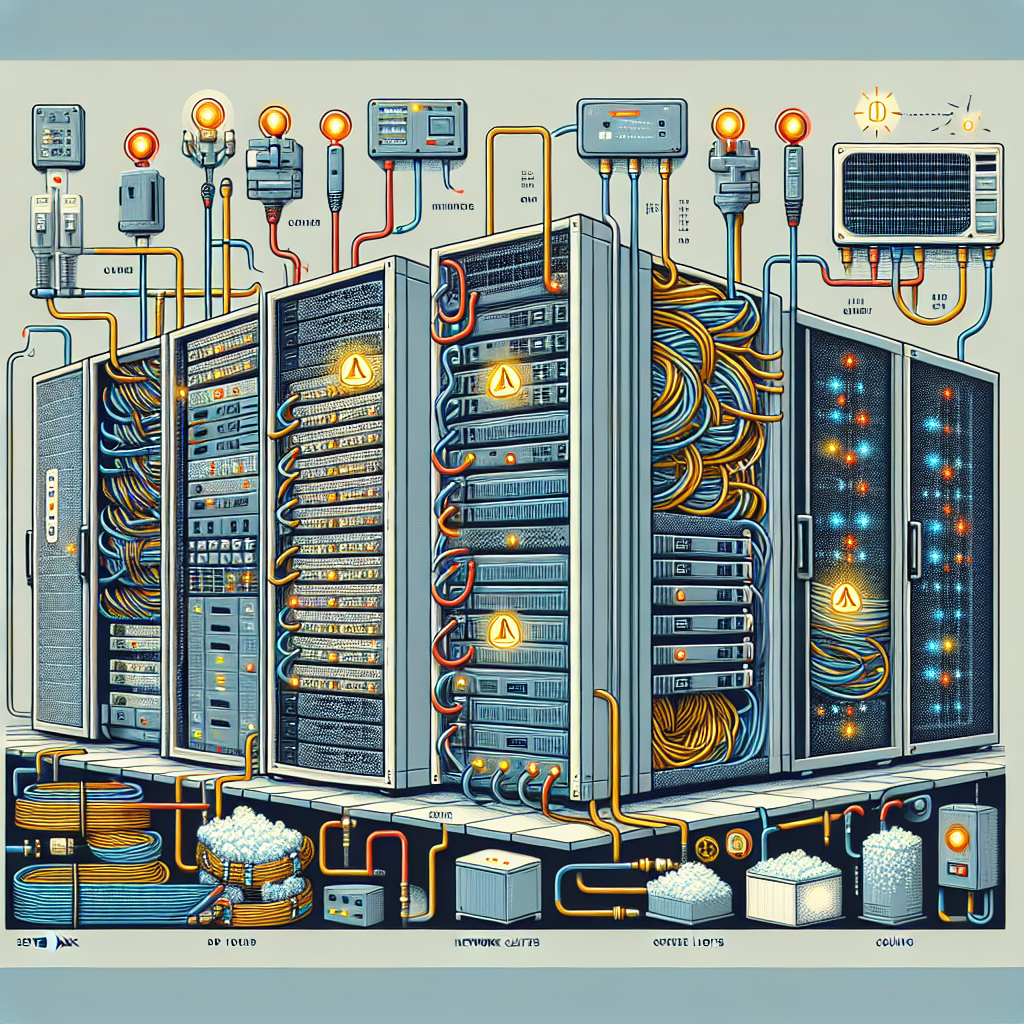
Common Data Center Troubleshooting Issues and How to Resolve Them
Data centers are an essential component of modern businesses, serving as the central hub for storing and managing critical information and applications. However, like any complex system, data centers are prone to encountering various issues that can disrupt operations and lead to costly downtime. In this article, we will discuss some common data center troubleshooting issues and provide tips on how to resolve them effectively.1. Power Outages:
One of the most common issues data centers face is power outages, which can be caused by a wide range of factors such as electrical faults, grid failures, or extreme weather conditions. To mitigate the impact of power outages, data centers should have backup power systems in place, such as uninterruptible power supplies (UPS) or generators, to ensure continuous operation during an outage. Regular maintenance and testing of these systems are also essential to ensure they are functioning properly when needed.
2. Cooling System Failure:
Data centers generate a significant amount of heat due to the operation of servers and other equipment, making cooling systems vital for maintaining optimal temperature levels. Cooling system failures can lead to overheating, which can damage equipment and result in system downtime. To prevent cooling system failures, data center operators should regularly monitor temperature levels, clean air filters, and perform routine maintenance on cooling equipment. In the event of a cooling system failure, it is crucial to have a backup cooling system or emergency cooling solutions in place to prevent equipment damage.
3. Network Connectivity Issues:
Network connectivity issues can disrupt data center operations and prevent users from accessing critical applications and information. Common causes of network connectivity issues include faulty cables, misconfigured network settings, or hardware failures. To troubleshoot network connectivity issues, data center operators should perform a thorough inspection of network equipment, check for any physical damage to cables, and verify network configurations. In some cases, rebooting network equipment or updating firmware can resolve connectivity issues.
4. Hardware Failure:
Hardware failures can occur unexpectedly and lead to system downtime, data loss, and potential financial losses. Common hardware failures in data centers include hard drive failures, memory errors, or power supply failures. To prevent hardware failures, data center operators should regularly monitor hardware health using monitoring tools, perform routine maintenance, and replace aging hardware components before they fail. In the event of a hardware failure, having spare hardware components on hand can help expedite the repair process and minimize downtime.
5. Security Breaches:
Data centers store sensitive information and are prime targets for cyberattacks and security breaches. Common security issues include malware infections, unauthorized access, or data breaches. To enhance data center security, operators should implement robust security measures such as firewalls, intrusion detection systems, and encryption protocols. Regular security audits and employee training can also help prevent security breaches and protect valuable data stored in the data center.
In conclusion, data center troubleshooting requires a proactive approach to prevent and resolve issues effectively. By implementing best practices, conducting regular maintenance, and having contingency plans in place, data center operators can minimize downtime, ensure data integrity, and maintain optimal performance. By addressing common data center troubleshooting issues promptly and effectively, businesses can safeguard their critical information and maintain uninterrupted operations.
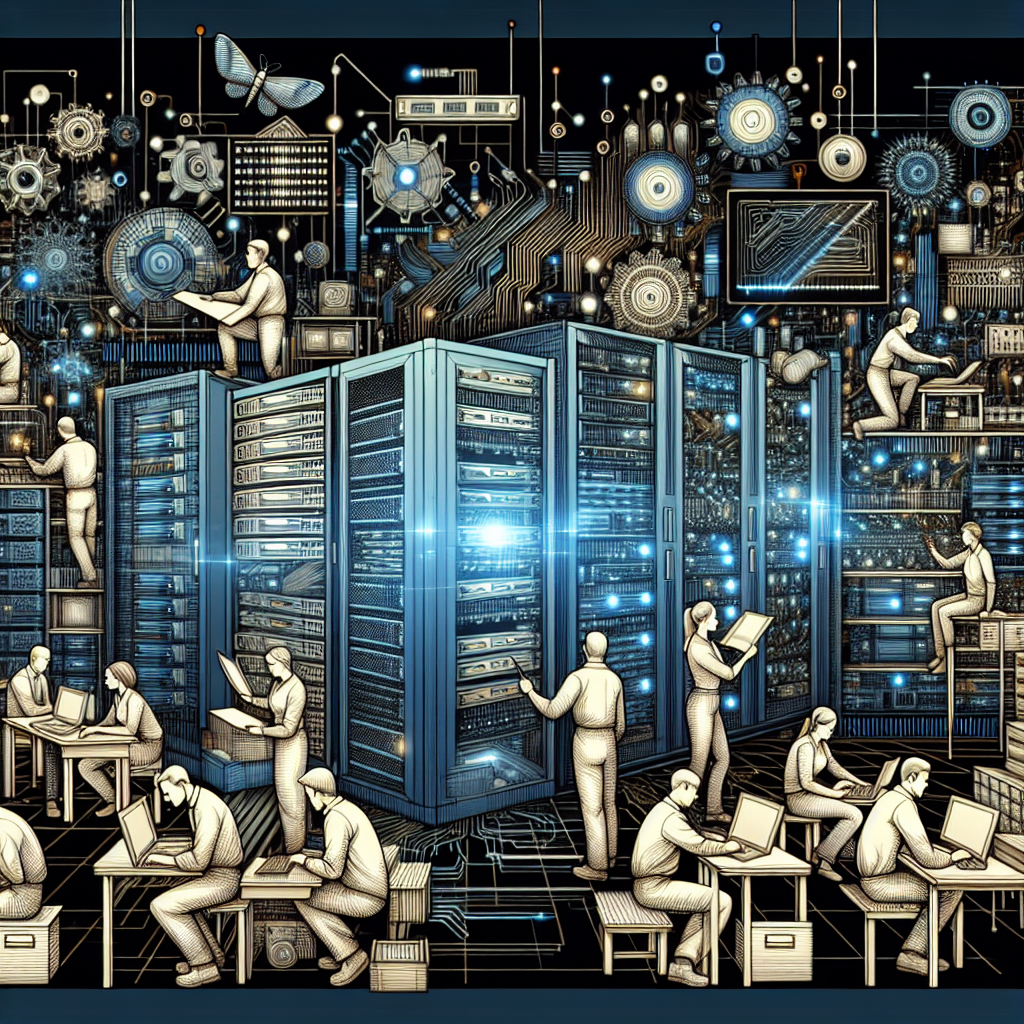
Effective Strategies for Data Center Troubleshooting and Maintenance
Data centers play a crucial role in the functioning of businesses and organizations by storing, processing, and managing vast amounts of data. As such, it is essential to ensure that data centers are properly maintained and troubleshooting issues are addressed promptly to prevent downtime and data loss. In this article, we will discuss some effective strategies for data center troubleshooting and maintenance.Regular Maintenance Checks
One of the most important strategies for data center maintenance is to conduct regular maintenance checks. This includes inspecting equipment, monitoring performance metrics, and checking for any signs of wear and tear. By identifying potential issues early on, you can address them before they escalate into more significant problems that could disrupt operations.
Implementing a Preventive Maintenance Plan
In addition to regular maintenance checks, it is essential to implement a preventive maintenance plan for your data center. This plan should include scheduled maintenance tasks such as cleaning, replacing filters, and testing backup systems. By proactively addressing potential issues, you can prevent costly downtime and ensure the smooth operation of your data center.
Monitoring Performance Metrics
Monitoring performance metrics is another crucial strategy for data center maintenance. By tracking metrics such as temperature, humidity, and power usage, you can identify any anomalies that could indicate a potential problem. Implementing real-time monitoring tools can help you quickly identify and address issues before they impact the operation of your data center.
Implementing Redundancy and Backup Systems
To ensure the reliability of your data center, it is essential to implement redundancy and backup systems. This includes having redundant power sources, cooling systems, and network connections to ensure that your data center can continue to operate in the event of a failure. Additionally, having backup systems in place can help you quickly recover data in the event of a disaster.
Training Staff
Finally, training staff on data center troubleshooting and maintenance procedures is essential. By ensuring that your team is knowledgeable and skilled in identifying and addressing issues, you can effectively manage and maintain your data center. Providing regular training sessions and keeping staff up to date on best practices can help prevent downtime and ensure the smooth operation of your data center.
In conclusion, effective data center troubleshooting and maintenance are essential for ensuring the reliability and performance of your data center. By implementing regular maintenance checks, preventive maintenance plans, monitoring performance metrics, implementing redundancy and backup systems, and training staff, you can effectively manage and maintain your data center to prevent downtime and data loss. By following these strategies, you can ensure the smooth operation of your data center and minimize disruptions to your business operations.
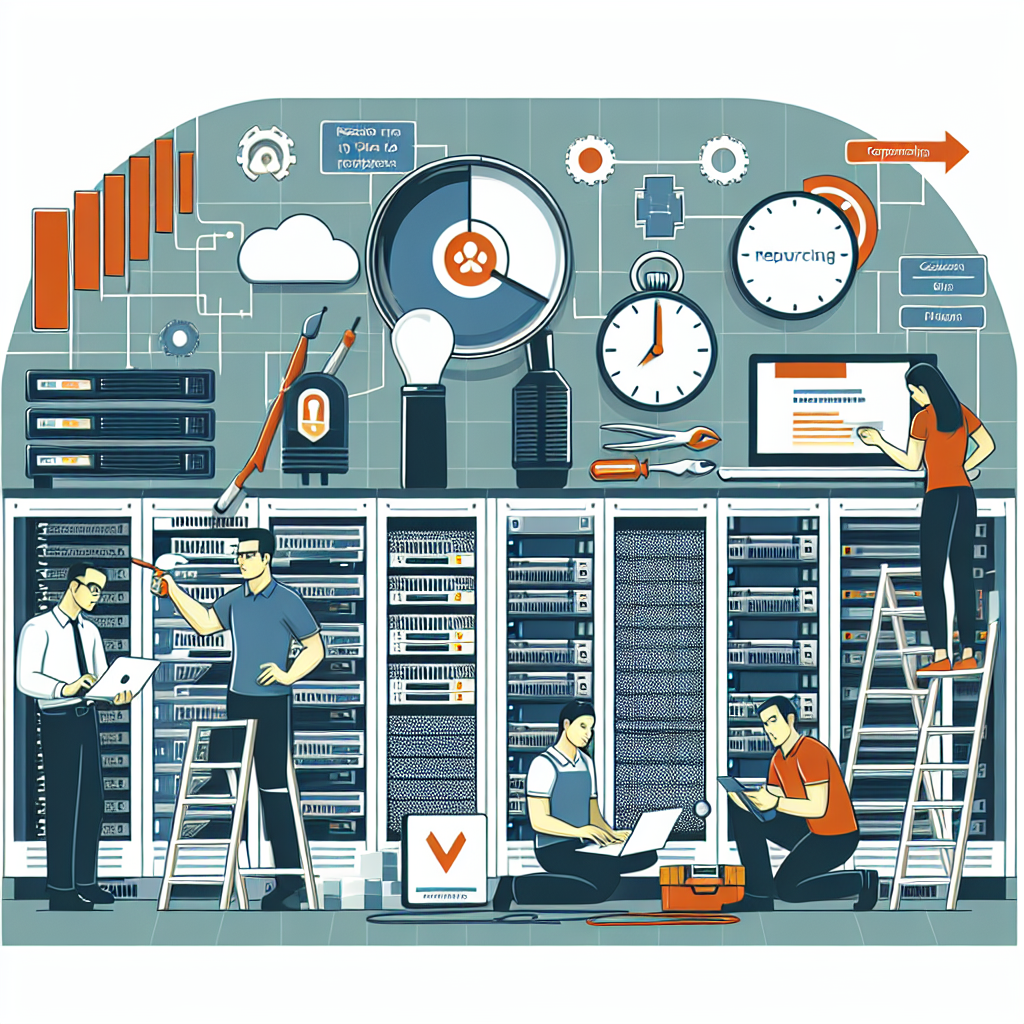
Troubleshooting Tips for Decreasing Data Center MTTR
In the fast-paced world of data centers, minimizing Mean Time to Repair (MTTR) is crucial to maintaining optimal performance and minimizing downtime. When issues arise, quick and efficient troubleshooting can make all the difference in getting things back up and running smoothly. Here are some troubleshooting tips to help decrease MTTR in your data center:1. Monitor and analyze performance metrics: Regularly monitoring key performance indicators such as CPU usage, memory utilization, network traffic, and storage capacity can help you identify potential issues early on. Analyzing these metrics can also help you pinpoint the root cause of problems more quickly.
2. Implement proactive maintenance: Regularly scheduled maintenance can help prevent issues before they occur. This includes tasks such as firmware updates, hardware checks, and system backups. By staying ahead of potential problems, you can reduce the likelihood of downtime and decrease MTTR.
3. Create a detailed incident response plan: Having a well-defined incident response plan in place can help streamline troubleshooting efforts when issues arise. This plan should include clear steps for identifying, isolating, and resolving problems, as well as designated roles and responsibilities for team members.
4. Utilize remote monitoring and management tools: Remote monitoring and management tools can provide real-time visibility into the health and performance of your data center infrastructure. These tools can alert you to potential issues before they escalate, allowing you to address them quickly and minimize downtime.
5. Document troubleshooting procedures: Documenting troubleshooting procedures can help ensure consistency and efficiency when resolving issues. Include step-by-step instructions for common problems, as well as any specific configurations or settings that may be relevant.
6. Conduct regular training and drills: Regular training sessions and drills can help ensure that your team is prepared to handle any issues that arise. Practice scenarios such as network outages, hardware failures, and software glitches to improve response times and decrease MTTR.
By implementing these troubleshooting tips, you can decrease MTTR in your data center and help ensure that your operations run smoothly and efficiently. Remember, the key to successful troubleshooting is preparation, proactive maintenance, and a well-defined incident response plan.
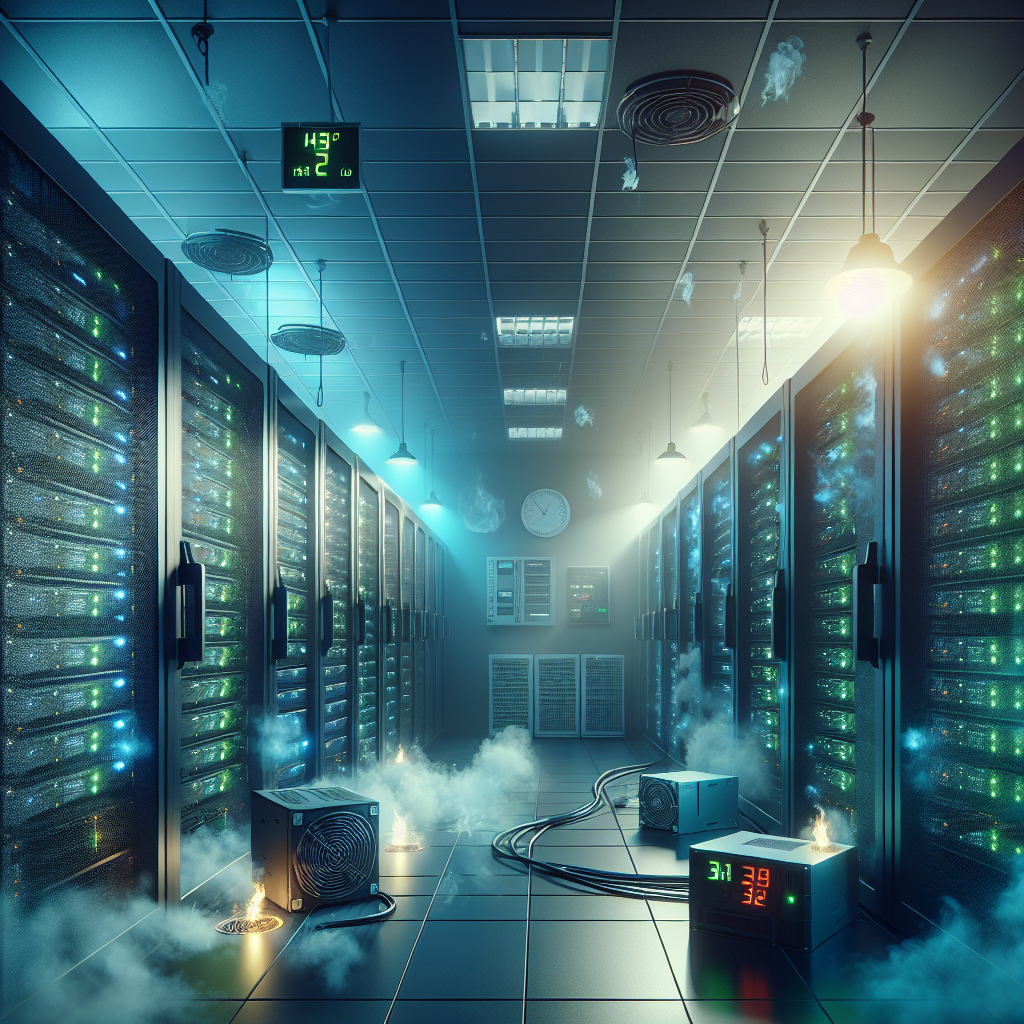
Troubleshooting Data Center Power and Cooling Issues
Data centers are the backbone of modern businesses, housing the critical infrastructure that supports the digital operations and services we rely on every day. However, power and cooling issues can disrupt the smooth operation of a data center, leading to downtime, data loss, and potentially costly damage to hardware.Troubleshooting power and cooling issues in a data center requires a thorough understanding of the systems in place and the ability to quickly identify and resolve problems before they escalate. Here are some common power and cooling issues that data center operators may encounter, along with tips for troubleshooting and resolving them.
Power Issues:
1. Power Outages: Power outages are a common issue that can disrupt data center operations. To troubleshoot power outages, check the circuit breakers and power distribution units to ensure they are functioning properly. It’s also important to have backup power sources, such as uninterruptible power supply (UPS) systems, in place to prevent data loss during outages.
2. Overloaded Circuits: Overloaded circuits can cause power issues in a data center, leading to overheating and equipment failure. To troubleshoot overloaded circuits, distribute power evenly across different circuits and consider upgrading to higher capacity circuits if needed.
3. Voltage Fluctuations: Voltage fluctuations can damage sensitive equipment in a data center. To troubleshoot voltage fluctuations, consider installing voltage regulators or power conditioning equipment to stabilize the power supply and protect equipment from damage.
Cooling Issues:
1. Overheating: Overheating is a common cooling issue in data centers, as the high density of equipment generates a significant amount of heat. To troubleshoot overheating, check the airflow and ventilation systems in the data center to ensure they are functioning properly. Consider installing additional cooling equipment, such as air conditioning units or liquid cooling systems, to regulate temperature and prevent overheating.
2. Hot Spots: Hot spots occur when certain areas of the data center become significantly hotter than others, leading to potential equipment failure. To troubleshoot hot spots, rearrange equipment to improve airflow and ventilation in the affected areas. Consider installing temperature monitoring systems to identify hot spots before they escalate.
3. Insufficient Cooling Capacity: Insufficient cooling capacity can lead to overheating and equipment failure in a data center. To troubleshoot insufficient cooling capacity, assess the current cooling systems and consider upgrading to higher capacity cooling equipment to meet the demands of the data center.
In conclusion, troubleshooting power and cooling issues in a data center requires a proactive approach and a thorough understanding of the systems in place. By identifying and resolving issues quickly, data center operators can prevent downtime, data loss, and equipment damage, ensuring the smooth operation of their critical infrastructure.Implementing best practices in power and cooling management, such as regular maintenance and monitoring, can help prevent issues from occurring and ensure the reliability and efficiency of a data center’s operations.

Data Center Troubleshooting Best Practices for IT Professionals
Data centers are the heart of any organization’s IT infrastructure, housing the servers, storage, and networking equipment that keep businesses running smoothly. However, even the most well-maintained data center can experience issues from time to time. When problems arise, it is crucial for IT professionals to have a solid troubleshooting plan in place in order to quickly identify and resolve issues before they impact business operations.Here are some best practices for data center troubleshooting that IT professionals should keep in mind:
1. Document Everything: Before troubleshooting any issues, it is important to have a thorough understanding of the data center’s layout, equipment, and configurations. Make sure to keep detailed documentation of all hardware and software components, as well as network diagrams and maintenance logs. This will help you quickly identify the root cause of any issues and track changes over time.
2. Monitor Performance: Regularly monitor the performance of your data center infrastructure using monitoring tools such as Nagios, Zabbix, or SolarWinds. These tools can help you identify performance bottlenecks, resource utilization issues, and potential hardware failures before they become critical problems.
3. Follow a Systematic Approach: When troubleshooting data center issues, it is important to follow a systematic approach to isolate the root cause of the problem. Start by gathering information about the issue, then narrow down the possible causes through a process of elimination. This may involve checking hardware logs, running diagnostic tests, and verifying configurations.
4. Use Remote Management Tools: Many data center issues can be resolved remotely using management tools such as IPMI, iLO, or DRAC. These tools allow you to access and manage servers and other equipment from anywhere, making it easier to diagnose and resolve issues without having to physically be in the data center.
5. Test Backups and Redundancy: Data centers should have backup and redundancy systems in place to ensure continuity of operations in the event of a hardware failure or disaster. Regularly test these systems to ensure they are functioning properly and can be quickly activated in the event of an emergency.
6. Collaborate with Vendors: If you are unable to resolve a data center issue on your own, don’t hesitate to reach out to the equipment vendor for support. Vendors often have specialized knowledge and tools that can help you quickly diagnose and resolve complex issues.
By following these best practices, IT professionals can effectively troubleshoot data center issues and minimize downtime, ensuring that business operations continue to run smoothly. Remember, prevention is always better than cure, so regular maintenance and monitoring of your data center infrastructure are key to avoiding issues before they escalate.
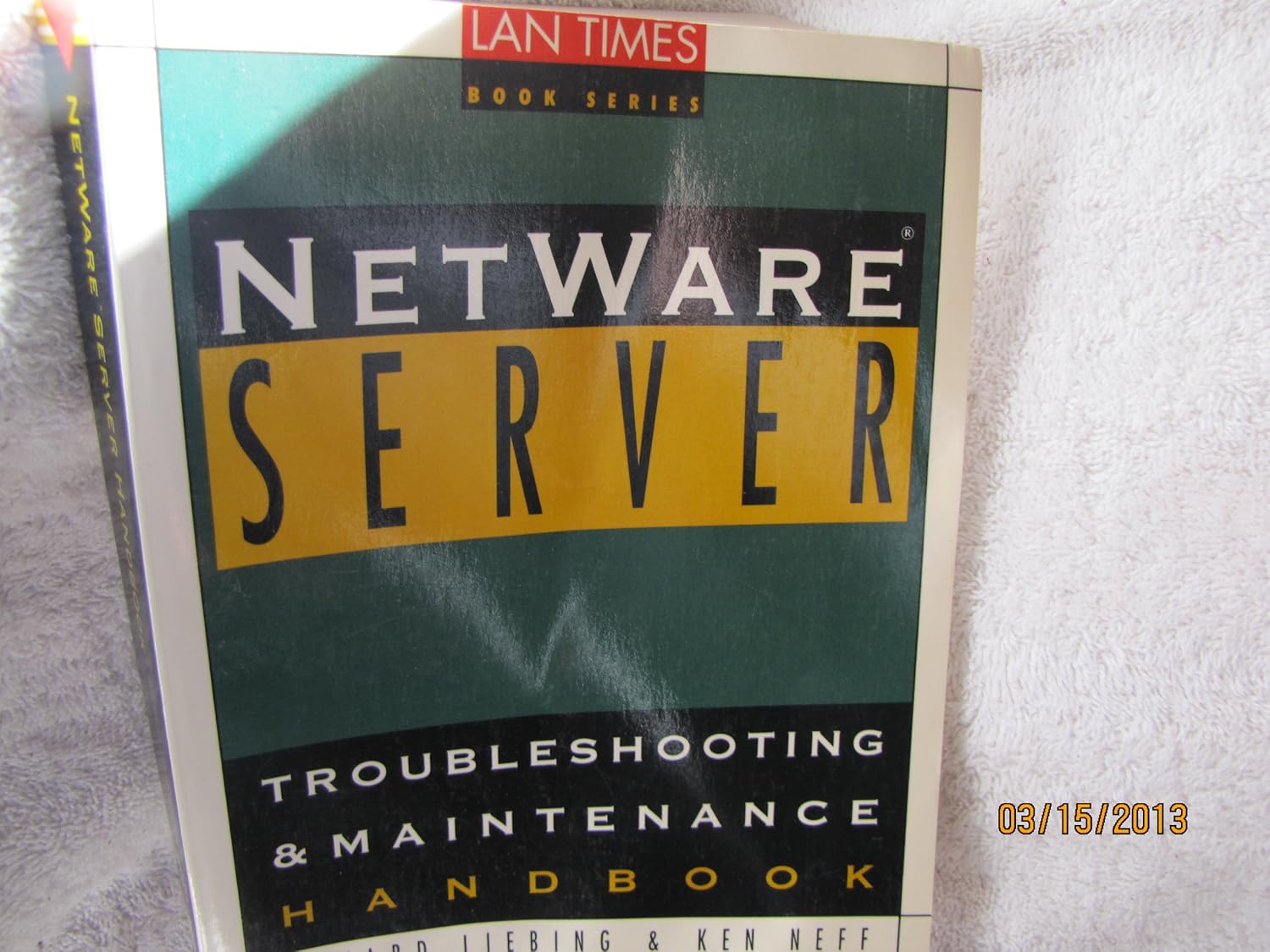
Netware Server Troubleshooting and Maintenance Handbook
Price: $46.97
(as of Dec 17,2024 08:20:09 UTC – Details)
Publisher : Computing McGraw-Hill (January 1, 1990)
Language : English
ISBN-10 : 007607028X
ISBN-13 : 978-0076070282
Item Weight : 1.21 pounds
Netware Server Troubleshooting and Maintenance HandbookIf you are responsible for managing a Netware server, it is important to be prepared for any issues that may arise. This handbook is designed to provide you with the tools and knowledge needed to troubleshoot and maintain your Netware server effectively.
In this handbook, you will find step-by-step instructions for common troubleshooting tasks such as diagnosing network connectivity issues, resolving server performance issues, and troubleshooting hardware failures. You will also learn best practices for ongoing server maintenance, including regular backups, software updates, and security measures.
Whether you are a seasoned Netware server administrator or just starting out, this handbook will serve as a valuable resource for keeping your server running smoothly and efficiently. Stay ahead of potential problems and keep your server in top working condition with the tips and techniques outlined in this comprehensive guide.
#Netware #Server #Troubleshooting #Maintenance #Handbook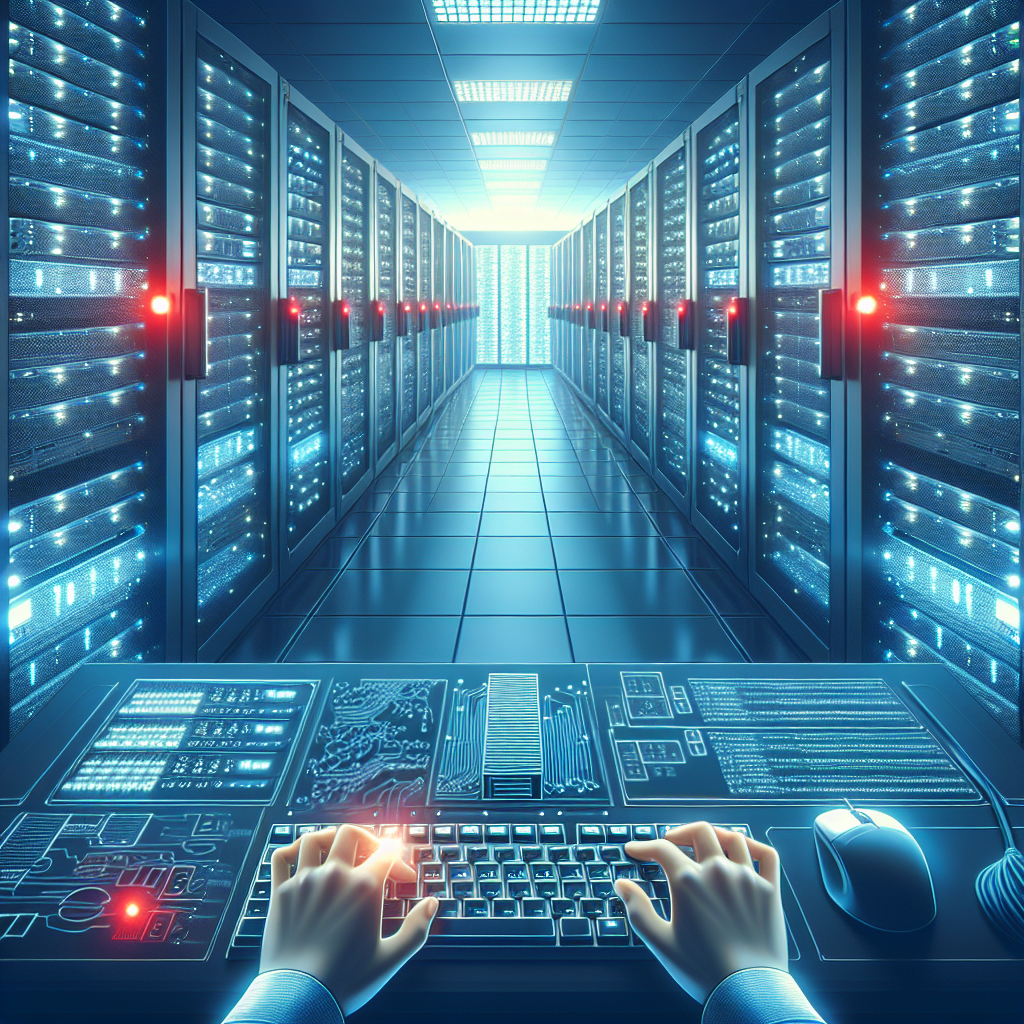
Troubleshooting Data Center Network Problems: A Step-by-Step Guide
Data centers are the heart of any organization’s IT infrastructure, housing critical hardware and software that keep operations running smoothly. When issues arise with the network within a data center, it can have serious implications for the entire organization. Troubleshooting network problems in a data center requires a systematic approach to identify and resolve issues quickly and effectively. In this article, we will provide a step-by-step guide to troubleshooting data center network problems.Step 1: Identify the Problem
The first step in troubleshooting any network issue is to identify the problem. This may involve gathering information from users, monitoring network performance, and reviewing logs and alerts. Common symptoms of network issues in a data center include slow performance, dropped connections, and intermittent outages.
Step 2: Check Physical Connections
Once the problem has been identified, the next step is to check the physical connections in the data center. Ensure that all cables are securely connected and that there are no loose or damaged connections. Pay special attention to network switches, routers, and servers, as these are often the source of network issues.
Step 3: Verify Network Configuration
After checking physical connections, it is important to verify the network configuration. Check the settings on network devices such as switches, routers, and firewalls to ensure they are configured correctly. Look for any misconfigurations or conflicts that could be causing the network problem.
Step 4: Monitor Network Traffic
Monitoring network traffic can provide valuable insights into the source of network problems. Use network monitoring tools to track traffic patterns, bandwidth usage, and packet loss. Look for any spikes or anomalies that could indicate a problem with the network.
Step 5: Test Connectivity
To further diagnose the network issue, test connectivity between devices in the data center. Use tools such as ping and traceroute to check for connectivity and latency issues. Test connectivity between different devices and locations to pinpoint the source of the problem.
Step 6: Update Software and Firmware
Outdated software and firmware can also cause network issues in a data center. Make sure that all network devices have the latest updates and patches installed. This can help resolve compatibility issues and improve network performance.
Step 7: Engage with Vendors
If the troubleshooting steps above do not resolve the network problem, it may be necessary to engage with vendors for support. Reach out to the vendors of network devices and software to seek assistance in resolving the issue. They may be able to provide additional troubleshooting steps or recommend a solution.
By following this step-by-step guide to troubleshooting data center network problems, organizations can identify and resolve network issues quickly and effectively. Taking a systematic approach to troubleshooting can help minimize downtime and ensure the smooth operation of the data center network.
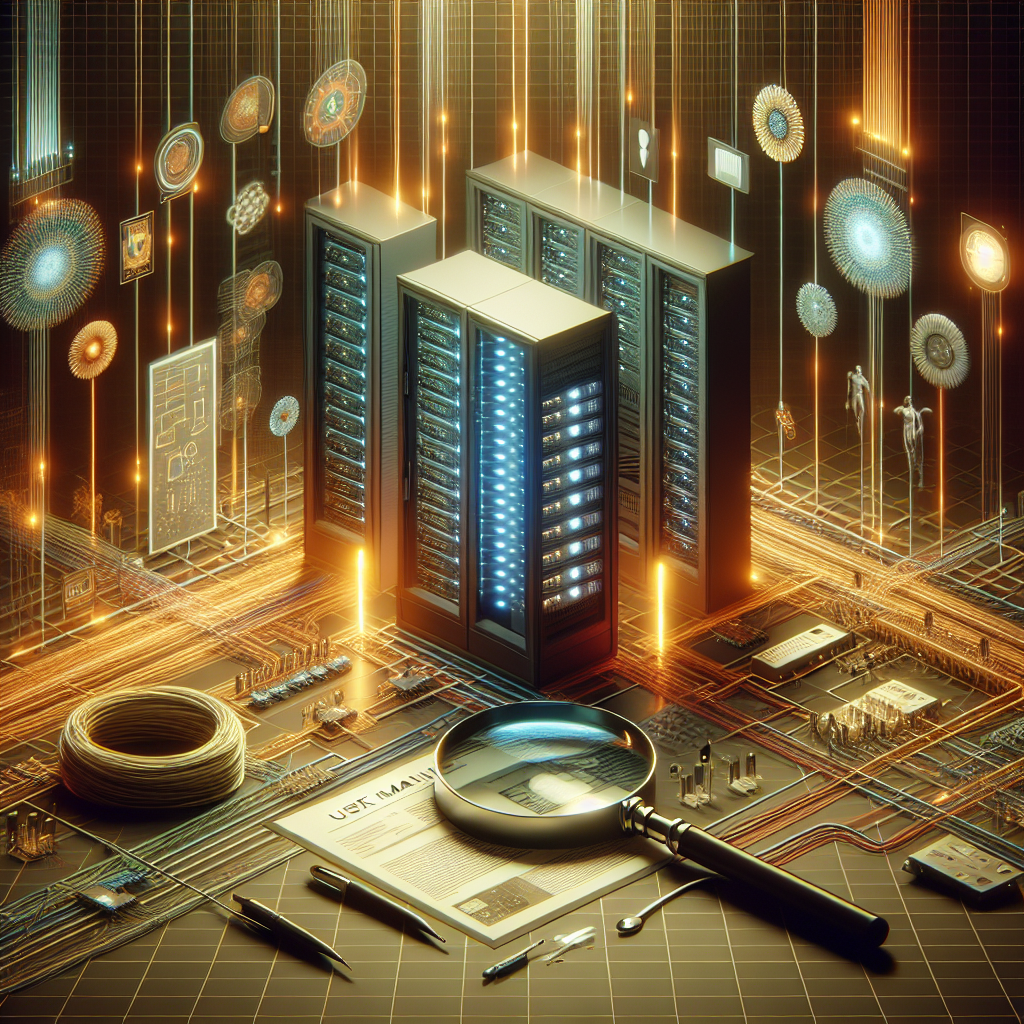
Troubleshooting Data Center Issues: Best Practices for Efficient Problem Resolution
A data center is a critical component of any organization’s IT infrastructure, serving as the central hub for storing, processing, and managing data. However, like any complex system, data centers can experience issues that disrupt operations and impact productivity. When faced with data center problems, IT teams must act swiftly to identify and resolve the issue to minimize downtime and maintain optimal performance.To effectively troubleshoot data center issues, IT teams should follow best practices for efficient problem resolution. These practices include:
1. Establishing a Monitoring System: Proactively monitoring the data center’s infrastructure can help identify potential issues before they escalate into major problems. Implementing a robust monitoring system that tracks key performance metrics, such as server health, network traffic, and temperature levels, can provide real-time insights into the data center’s overall health.
2. Conducting Regular Audits: Conducting regular audits of the data center’s hardware and software components can help identify potential vulnerabilities and areas for improvement. Audits can also help ensure that the data center’s systems are properly configured and maintained to prevent issues from occurring.
3. Documenting Troubleshooting Procedures: Developing a comprehensive troubleshooting guide that outlines step-by-step procedures for addressing common data center issues can help IT teams quickly resolve problems when they arise. Documenting troubleshooting procedures can also help ensure consistency in problem resolution efforts across the organization.
4. Utilizing Remote Monitoring and Management Tools: Remote monitoring and management tools can provide IT teams with visibility into the data center’s infrastructure from anywhere, allowing them to quickly diagnose and address issues without the need to be physically present in the data center. These tools can help expedite the troubleshooting process and minimize downtime.
5. Collaborating with Vendors and Service Providers: In some cases, data center issues may require the expertise of vendors or service providers to resolve. Establishing strong relationships with these third-party partners can help IT teams access the necessary resources and support to address complex issues effectively.
6. Implementing Disaster Recovery and Backup Plans: To mitigate the impact of data center issues, organizations should implement robust disaster recovery and backup plans that ensure business continuity in the event of a data center outage or failure. Regularly testing these plans can help identify and address potential weaknesses before they become critical issues.
By following these best practices for troubleshooting data center issues, IT teams can efficiently resolve problems and maintain the performance and reliability of the data center. Proactive monitoring, regular audits, documented procedures, remote management tools, collaboration with vendors, and disaster recovery planning are essential components of an effective troubleshooting strategy. By implementing these practices, organizations can minimize downtime, optimize performance, and ensure the integrity of their data center operations.
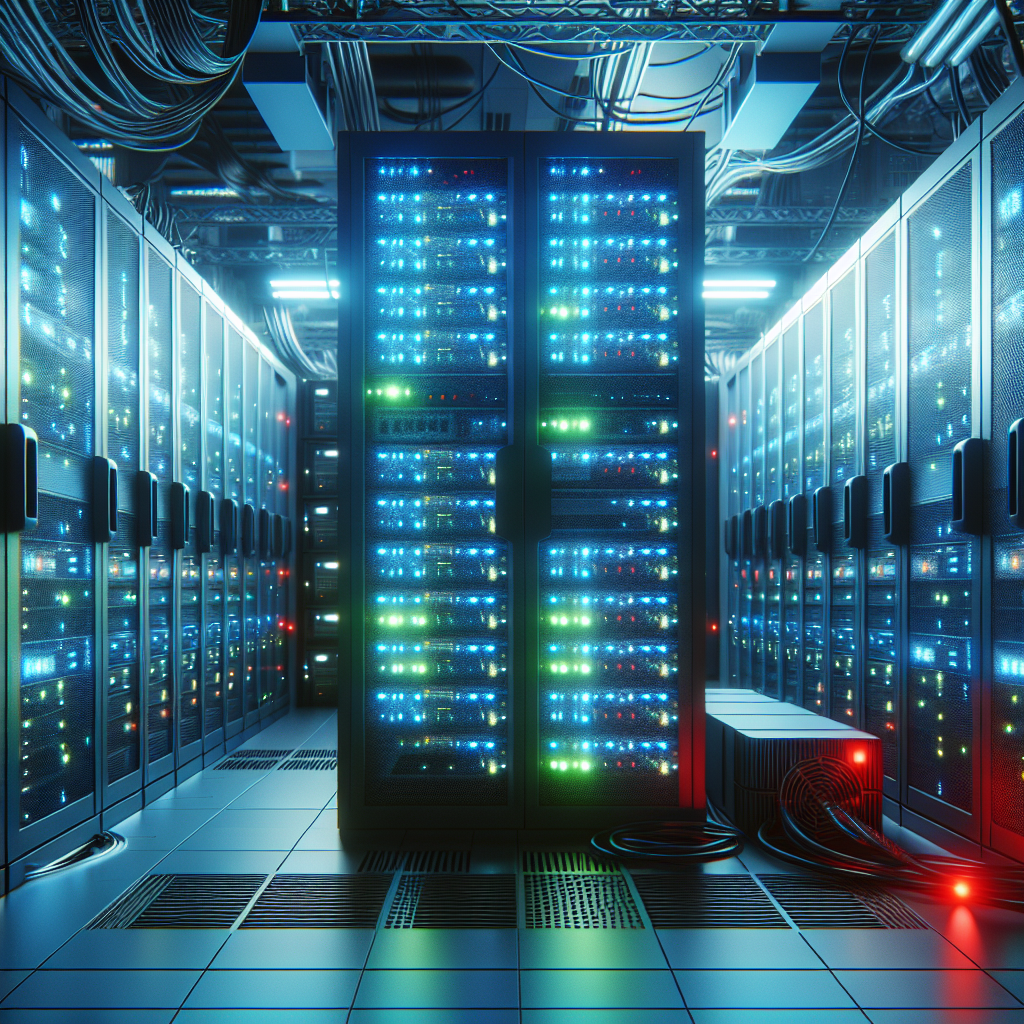
Troubleshooting Data Center Cooling and Power Problems
Data centers are the backbone of modern technology, housing the servers and networking equipment that keep businesses running smoothly. However, even the most state-of-the-art data centers can encounter cooling and power problems that can disrupt operations and potentially damage expensive equipment. Troubleshooting these issues quickly and efficiently is crucial to maintaining the integrity and reliability of the data center.One common issue that data centers face is cooling problems. Data centers generate a significant amount of heat due to the constant operation of servers and other equipment. If the cooling system is not functioning properly, the temperature inside the data center can rise to dangerous levels, leading to equipment failure and potential data loss. To troubleshoot cooling problems, data center operators should first check the airflow in the facility to ensure that it is adequate for the equipment’s needs. Blocked vents or obstructions can restrict airflow and cause overheating. Additionally, checking the functionality of the cooling units, such as air conditioners and fans, is essential to ensure that they are operating correctly. Regular maintenance and cleaning of cooling equipment can also prevent issues from arising.
Power problems are another common issue in data centers that can be caused by various factors, such as power surges, outages, or fluctuations. These problems can not only damage equipment but also lead to data loss and downtime. To troubleshoot power issues, data center operators should first check the power source to ensure it is stable and reliable. Installing surge protectors and uninterruptible power supply (UPS) systems can help protect equipment from power surges and outages. Regularly monitoring power consumption and distribution can also help identify potential issues before they escalate.
In some cases, cooling and power problems in data centers may be interconnected. For example, if the cooling system fails due to a power outage, the temperature inside the data center can quickly rise, causing equipment to overheat and potentially fail. To mitigate these risks, data center operators should have a comprehensive disaster recovery plan in place that includes procedures for addressing cooling and power problems.
Overall, troubleshooting data center cooling and power problems requires a proactive approach to monitoring and maintenance. Regularly inspecting and testing cooling and power systems, as well as implementing preventive measures, can help prevent issues from arising and ensure the smooth operation of the data center. By addressing these problems quickly and efficiently, data center operators can minimize downtime, protect valuable equipment, and maintain the integrity of their operations.
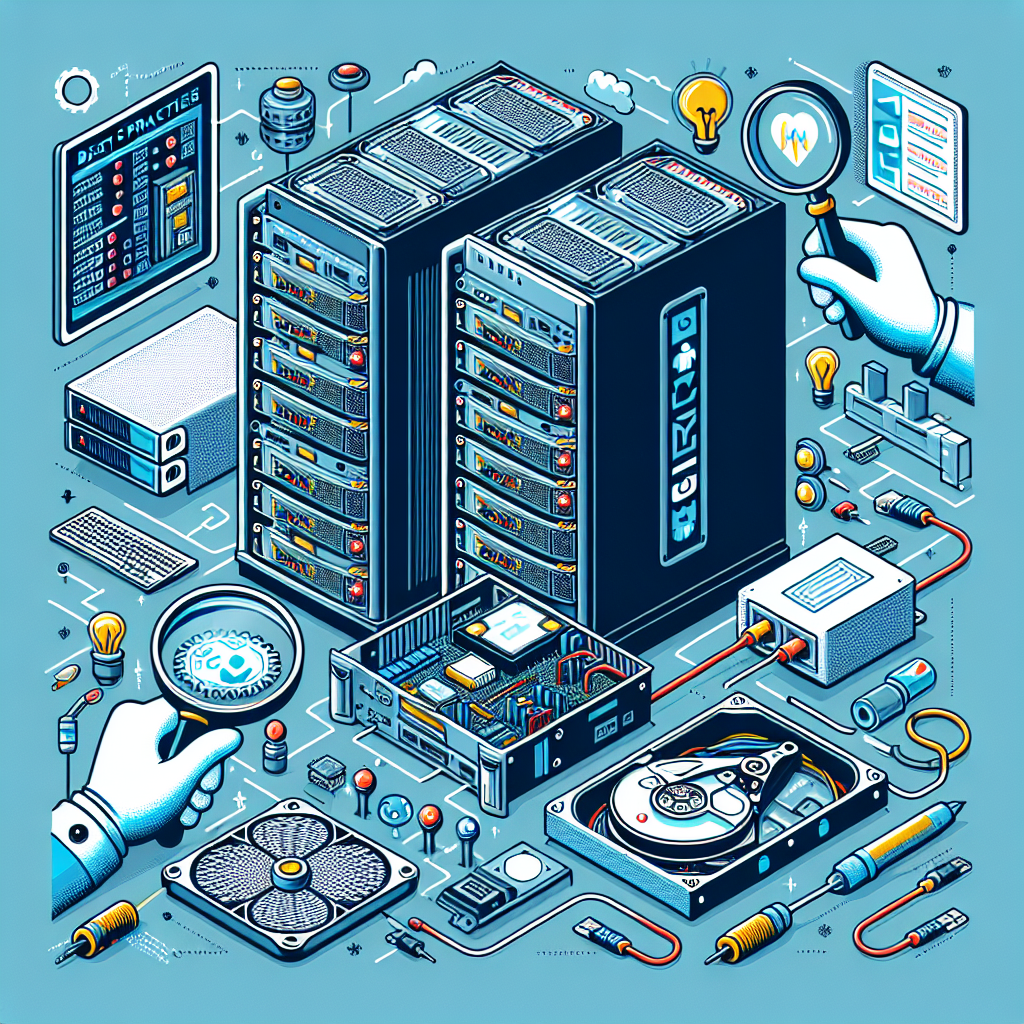
Best Practices for Data Center Hardware Troubleshooting
Data centers are the backbone of modern businesses, housing the critical hardware and software that keep operations running smoothly. When something goes wrong with the hardware in a data center, it can have a significant impact on the organization’s ability to function effectively. That’s why it’s essential to have best practices in place for troubleshooting hardware issues in a data center.Here are some best practices for data center hardware troubleshooting:
1. Develop a comprehensive inventory: One of the first steps in troubleshooting hardware issues in a data center is to have a comprehensive inventory of all the hardware components in the facility. This includes servers, storage devices, networking equipment, and any other critical hardware. Having this inventory readily available can help technicians quickly identify the source of the problem and take appropriate action.
2. Implement monitoring tools: Monitoring tools are essential for identifying hardware issues before they escalate into major problems. These tools can provide real-time data on the performance of hardware components, alerting technicians to any anomalies or potential failures. By proactively monitoring hardware, data center staff can address issues before they impact operations.
3. Establish a standardized troubleshooting process: Having a standardized troubleshooting process in place can help ensure that hardware issues are resolved efficiently and effectively. This process should outline the steps to take when a problem arises, including identifying the issue, isolating the root cause, and implementing a solution. By following a standardized process, technicians can work methodically to resolve hardware issues in a timely manner.
4. Document past issues and resolutions: Keeping detailed records of past hardware issues and their resolutions can be invaluable for troubleshooting future problems. By documenting the steps taken to resolve previous issues, data center staff can quickly reference this information when facing similar challenges. This documentation can also help identify recurring problems and potential patterns that may indicate underlying issues with hardware components.
5. Conduct regular maintenance: Regular maintenance is essential for keeping data center hardware in optimal condition. This includes tasks such as cleaning equipment, updating firmware, and replacing worn-out components. By staying on top of maintenance tasks, data center staff can prevent hardware failures and prolong the lifespan of critical equipment.
6. Train staff on troubleshooting techniques: Finally, it’s important to ensure that data center staff are properly trained on troubleshooting techniques for hardware issues. This includes familiarizing technicians with common hardware problems, teaching them how to use monitoring tools effectively, and providing hands-on experience with troubleshooting hardware components. By investing in training for staff, data centers can build a skilled team capable of quickly identifying and resolving hardware issues.
In conclusion, data center hardware troubleshooting is a critical aspect of maintaining the integrity and reliability of a data center. By following best practices such as developing a comprehensive inventory, implementing monitoring tools, establishing a standardized process, documenting past issues, conducting regular maintenance, and training staff on troubleshooting techniques, organizations can effectively address hardware issues and minimize downtime. By prioritizing proactive maintenance and investing in staff training, data centers can ensure that their hardware remains in top condition and operations run smoothly.
